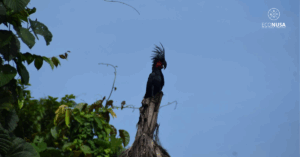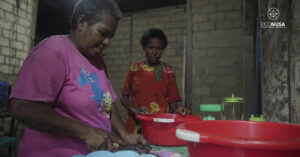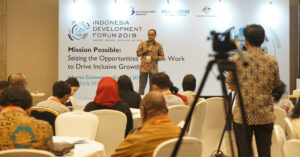
Various items can be found in rubbish heaps, including rubbish in the sea. From the type of item can be known the origin of the garbage. Most are indeed from the mainland, based on the findings of types of waste such as bags, bottles to plastic straws.
Therefore, it is not surprising that the movements initiated by the authorities until environmental groups are minimizing the consumption of plastics by humans on land. Because, several times this plastic waste produces adverse effects on the marine ecosystem. Ranging from turtles trapped by plastic circles to straws that are blocked in the turtle’s nose.
However, there is one activity from humans in the oceans that helps produce deadly rubbish for creatures that live in water. Namely a net or fishing equipment that is overlooked.
The neglected equipment is often referred to as the no-man’s equipment or Ghost Gear. The origin of this equipment varies, ranging from accidentally lost when the fishermen were on duty at sea, or even deliberately thrown away due to conditions that are not suitable for use.
Ghost Gear rarely gets special attention compared to other types of plastic waste. In fact, based on calculations carried out by the United Nations Institute for Food and Agriculture (FAO), their number reaches 10% of all plastics that enter the ocean each year. That means, Ghost Gear has roughly accounted for 640,000 metric tons of waste annually and is expected to reach 800,000 metric tons this year.
In fact the number is likely to reach greater than the calculation. A study conducted by The Ocean Cleanup showed 46% of plastic floating in the Pacific waters consists of this Ghost Gear.
The impact of each plastic that ends up in the ocean is different. Especially for Ghost Gear, the impact remains deadly as these tools are made, to capture and kill marine ecosystems. This includes fish, turtles, birds in the sea and water mammals such as whales, dolphins, seals and sea lions.
A net that is left just like that will close and strangle coral reefs and destroy the entire ecosystem.
At present, the impact of damage caused by Ghost Gear is still difficult to calculate.
Ghost Gear results in the loss of economically valuable fish stocks. Fish that are lost due to Ghost Gear are fish that will not be able to breed, cannot be sold or eaten. This is the same as the impact of illegal and excessive fishing.
In the Baltic Sea, a missing gill net can destroy $ 20,000 worth of seafood. In the United Kingdom, the loss of fishing equipment causes the fisheries sector to lose an average of € 420 thousand per year, based on the loss of fish catch, replacement of equipment and time lost due to resetting the equipment.
On the other hand, Ghost Gear poses a threat to the life of the vast marine ecosystem. An estimated 136 thousand whales, dolphins, seals and sea lions die from Ghost Gear every year, most of them even have to suffer long before dying.
To find out the root cause of Ghost Gear, the first thing to know is the origin of the equipment. Based on a survey conducted on Indonesian and Australian fishermen published in the October issue of Marine Policy, about ⅘ of the missing equipment could be caused by bad weather and ⅕ the rest was caught by equipment installed by other fishermen.
In addition, other causes can also be caused by illegal fishing practices. Joanna Toole from the Food and Agriculture Organization of the United Nations (FAO) stated that the equipment was deliberately disposed of by the crew to avoid detection by the authorities.
Other causes, improper storage and recycling facilities in each port make obsolete equipment carried by fishermen not accommodated.
As a precautionary measure to increase the Ghost Gear population in the oceans, FAO for the first time issued guidelines to the Governments in each country to label each fishing gear. “In ways that can give us the ability to track the equipment to the original manufacturer,” said Toole.
However, the guidelines have not forced and every country that wants to implement them only does so voluntarily, and the UN does not provide specific methods for labeling them. Even so, some guidelines already exist so that implementation in each country can vary.
For example, the European Union requires the marking of the port name and ship number on each fishing gear. While in America, each region has different regulations and some are stricter than others.
Recently, the SINTEF Institute from Norway developed a tool to mark the fishing gear used by fishermen. The tool, named PingMe, was developed in response to an unpleasant sight of a turtle caught in a no-man’s net.
The Tone Berg scientist who developed the tool explained that PingMe had to be attached to a net that was still in use, and they would reflect the sound signals emitted by the fishing boat’s sonar system. Utilizing an embedded electronic device, PingMe will differentiate each signal they reflect in accordance with the arrangements made by each fisherman.
If fishermen lose their nets, they can track them using a sonar screen that displays reflected signals from PingMe. In addition, even fishermen who pass by can catch signals from PingMe attached to the lost net. So that it can be known the identity of the owner who is responsible for the net.
Either way, preventing disposal or disposal of fishing gear is one way to ensure that the marine ecosystem remains healthy.








